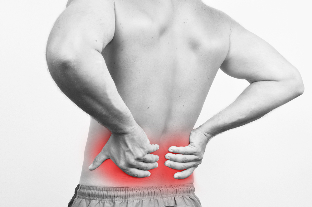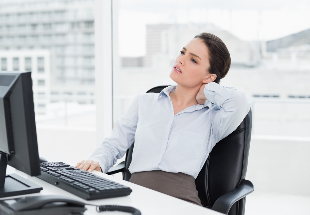Almost everyone in life, at least one long episode of back pain, and one third of adults these unpleasant feelings are repeated on a regular basis. The urgency of the problem is shown with at least the fact that for the treatment of back pain each year, spending three times more money than on therapy for patients with cancer.
The duration of the episode of pain is usually about 2 weeks, but in many patients, residual symptoms persist for months or more. Arepart of these patients suffering from herniated discs, spinal canal diseases, diseases of the kidneys, ovaries, and other internal organs, and sometimes malignant tumors or their metastases.
In our article we will briefly describe the main causes of back pain and their typical properties, which help people to understand that with his health problems and it is time to consult a doctor.
The likely causes of back pain:
- injuries of the spine, its ligaments and muscles;
- the denial of roots and other diseases of the spinal cord;
- diseases of the internal organs;
- connective tissue disease;
- depression and psychogenic disorders.
Been proven that back pain often occur in low physical activity, obesity, Smoking, heavy physical work, stay in an uncomfortable situation, long-term operation of the vibration, and sharp turns of the torso.
Diseases of the spine, its ligaments, and joints

Most people with complaints of back pain result from injuries to the intervertebral discs, joints between the processes, as well as a single bone of the vertebral body. With age, the discs between the vertebrae lose water, reducing the thickness of the. Due to the increased mobility of individual segments of the spine, which irritates the receptors for pain in the intervertebral joints. It should be said that often even in people with a pronounced age changes of the spine, pain in the back, no. Often a herniated disc in combination with pain randomly.
In recent years, still greater importance in the development of persistent back pain are given the so-called syndrome of the joints with "small face" — a private form of osteoarthritis affecting the articular apparatus of the spine.
Pain in this syndrome may be unilateral, bilateral, localized in the vicinity of the spine, most often in the lumbar region extending into the thigh. Pain often occurs in the morning, but during the day and re-increased after load for the evening. First of all, occurs usually after the sharp awkward or torso. The pain is worse in standing and extension of the back is decreased in the sitting position or supine, with the light bending, use of the support. Syndrome joints with "small face" often recurs.
Often cause back pain in case of injuries of the spine the following states:
- spondylolisthesis – displacement of vertebrae relative to each other;
- the spinal stenosis;
- ankylosing spondylitis (Bechterew disease);
- osteoporosis, fractures of the vertebral bodies (often in the elderly, especially in women);
- a large disk herniation (more than 5 mm);
- diseases of the cervical spine.
Lack of physical activity in a working day is a distinctive feature of the work in the office. Lack of exercise, prolonged stay in an awkward position and provoke too much stress on the joints and cause pain, discomfort and gradual destruction of the cartilage. Therefore, office workers are advised to regularly do exercises, and they need the resources for the protection and regeneration of the cartilage.
More rare but dangerous causes of pain, the syndrome is a tumor, most often the metastases in the spine. The risk increases if the patient has any of the cancer (often lung cancer, breast cancer and prostate cancer), weight loss, fever, duration of complaints more than a month, the age of 50 years. Metastases most frequently affect the thoracic spine.
The other reason for back pain related to cancer is myeloma. Rarely, however, are the primary benign and malignant tumors of the spine, for example, a benign tumor produced from bone tissue, Ewing's sarcoma.
Ankylosing spondylitis should be suspected in a young patient, age, morning stiffness of the spine and large joints, the improvement after the warm-up. Pain often occurs in the gluteal region. The typical gain of the night, so sick in the morning not able to sleep due to the discomfort.
Back pain that appear for the other symptoms, which are observed in the following diseases:
- psoriatic arthritis;
- rheumatic diseases;
- juvenile rheumatoid arthritis;
- Crohn's disease, Whipple's, ulcerative colitis;
- shigellosis, salmonellosis.
An important part of comprehensive treatment is the administration of the medication, the effectiveness, which focuses on the preservation and improve the condition of joints and cartilage. Injection provides maximum usability and speed of action of the drug, which helps to stop the progression of the destruction of the cartilage, reduces inflammation and stimulates the synthesis of hyaluronic acid. Due to the rapid onset of the effect, that there is no need for long courses of drugs-a total of 20 injections of 2-fold per year. Supplement are the treatment of pain in the back allows to reduce the dose and duration of use of nsaids.
Osteomyelitis of the spine or spondylitis have to take the long-term fever, intravenous medicines or drugs, previous infectious disease or injury, the administration of immunosuppressants. Inflammatory diseases of the spine can have a special nature, arising from syphilis, tuberculosis.
Defined the so-called indicators of serious problems requiring a thorough examination of the patient:
- suddenly, for the first time appeared the pain;
- very severe pain;
- no correlation of pain from the position of the body;
- the pain is stronger at night than during the day;
- patient age younger than 20 and older than 55 years;
- a recent back injury;
- the likelihood of infection (inflammation in urogenital tract, taking immunosuppressive agents, acquired immune deficiency syndrome);
- moved cancer;
- unexplained weight loss and fever;
- nausea;
- incontinence of urine or faeces;
- gait disturbances;
- progressive neurological disorders.
Lose muscle

Lose the back muscles can be secondary: in diseases of the spine, the muscles tense, creating a "protective system", which has our spine, but from the constant tension and spasms are the cause for the pain. Often a muscle spasm occurs at the beginning of, for example, during a long stay in an uncomfortable situation, or increased anxiety. This pain syndrome has a relatively benign and, of course, responds well to medical therapy.
Some systemic diseases of muscles is also present with back pain. These include:
- in rheumatic polymyalgia;
- fibromyalgia.
Fibromyalgia is a fairly common disease, which often occur in middle-aged women. This is characterized by diffuse pain in the muscles in the body, nausea, sleep disturbances, changes in skin sensation, anxiety, unstable chair.
Pathology of the spinal cord and its roots
Compression of spinal roots emerging through the holes between the vertebrae, is more rarely the cause of pain in the every 10. the patient. However, this pain syndrome stronger and longer, and the treatment, which lasts about 2 months.
Compression (compression) root cause:
- a hernia on the intervertebral disc;
- hypertrophy of the yellow ligaments;
- growth of bones;
- narrowing of the spinal canal (e.g. because of injury).
A picture of the destruction of the roots (radiculopathy): the sharp "shooting" pain, disturbance of sensation in the area of innervation of the spine, decreased reflexes, weakness of the corresponding muscles. If compression of the spine has been proven by modern research methods and drug treatment is ineffective, sometimes have to resort to surgery.
Diseases of the internal organs
Lower back pain occurs not only in diseases of the spine or the spinal cord, but also accompanied by many diseases of the internal organs:
b- heart disease (myocardial infarction, stable and unstable angina, infective endocarditis, aortic aneurysm);
- lung disease (pulmonary embolism, pneumothorax, pneumonia);
- pathology of the esophagus and the stomach (peptic ulcers, spasm of esophagus, esophagitis);
- inflammatory processes in the kidney, liver, pancreas, gall bladder.
Usually distinguish these diseases allow for two things:
- sudden and very severe pain in the back;
- signs of damage to the relevant authorities (shortness of breath, rales in the lungs, pain on palpation of the abdomen, and so on).
For back pain, especially that arising suddenly and is not accompanied by signs of disease of the spine, it is always necessary to register the electrocardiogram to exclude acute myocardial infarction. Especially this atypical localization of pain in ischemic heart disease, which is characterized by the seniors.
Psychogenic disorders
The passage of pain in the chronic form contribute to social and behavioural factors:
- financial problems;
- emotional stress;
- confidence in the inevitability of pain because of its obvious connection with the day to day work;
- thoughts on the potential of serious disease and disability;
- depression;
- dependency on other people;
- the strategy of preventing the disease, that the patient does not take action to diagnose and treat your condition.
What doctor to address
So the causes of back pain are varied. They are often associated with diseases of the spine and spinal cord, when they occur, you should consult with a neurologist. In addition, you may need to consult other specialists: neurosurgeon, oncologist, gastroenterologist, cardiologist, surgeon, and psychologist. Choose the right specialist, you can first contact the therapist after the initial examination to establish a provisional diagnosis.





































